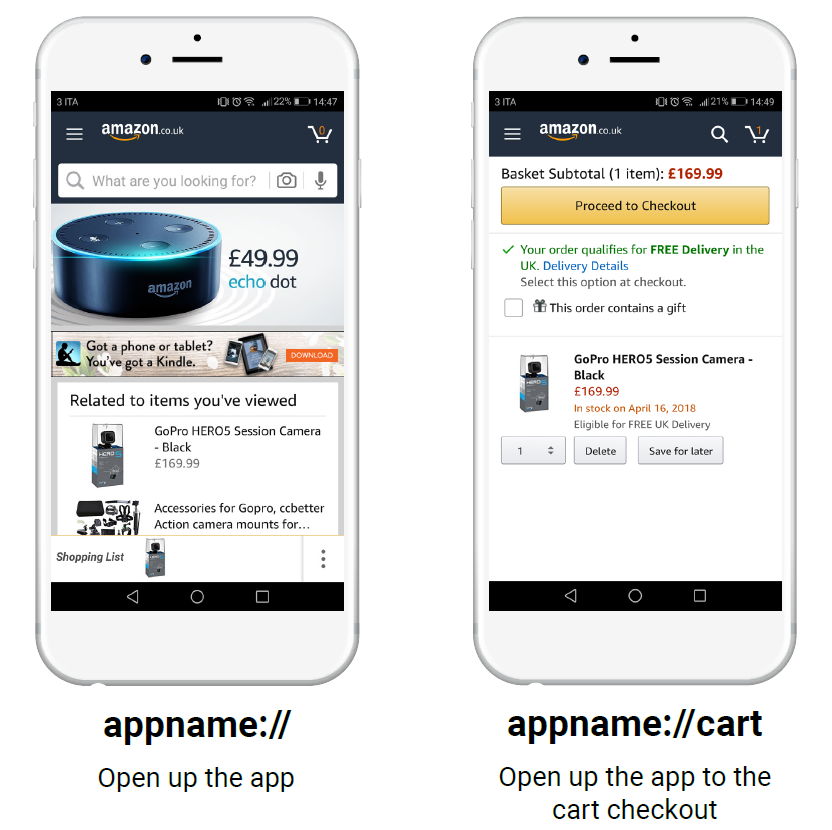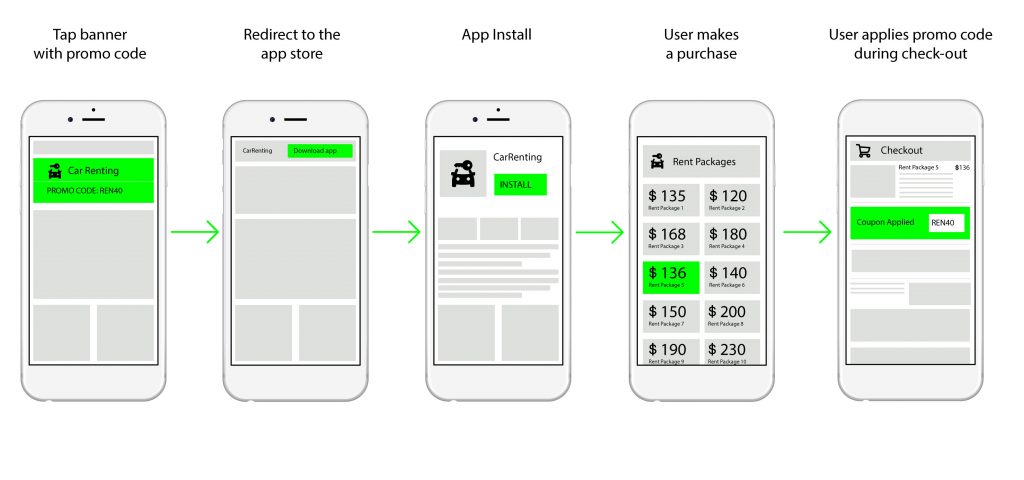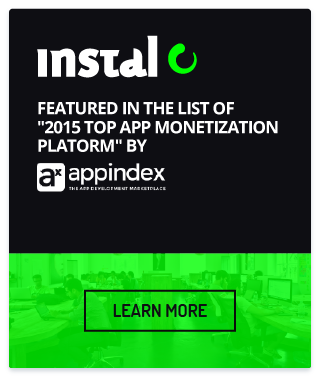Goodbye users, hello people – Unveiling the full potential of deep links.
Digital business has changed in the last few years: we are now switching from mobile first to mobile-only now. Recent researches indicate that users on average spend 4 hours per day on their mobile devices and 3 hours on apps alone. Despite this, user retention is still considered a challenge. Almost 25% of users abandon an app right after one use.
This situation creates a complex ecosystem of interconnected channels, where mobile marketers need to link users between web pages (desktop and mobile) and within apps (all without losing user information so that the chances of converting users into loyal customers are more likely). Deep Linking provides a powerful tool to identify, address and bring users to specific content within an app, which helps to increase traction and engagement.
Deep Linking Basics
Deep Linking is defined as the ability to link directly into a specific page within a native iOS or Android mobile app rather than just launching it.Deep links allow the revealing of specific content pages and have the ability to pass customized data (like promo codes) even if the app is not installed yet.
They look like standard URLs but are set to target a precise page within an app for mobile devices to open.
Standard URL → Http: // protocol
Deep Linking → app name: // page to open
Deep Linking has a precise structure known as URI which looks like a traditional URL.
Deep Linking has three main different uses and levels of customization:
- Basic Deep Linking: they can be used to send users to any part of an app instead of a generic welcome page
- Deferred Deep Linking: they can be used to redirect users to specific content after downloading the app
- Contextual Deep Linking: they can be used to store information about users other than user data/previous activity.
Deep Linking comes in different sizes and formats and can be considered a useful and flexible solution to improve app marketing strategies with its crucial goal being retention.
Some app verticals work better with Deep Linking — these include shopping, music and lifestyle. Deep Linking can identify different types of content. The most popular deep links are ones associated with product lists or promo codes.
Deep Linking has three main different uses and levels of customization:
- Basic Deep Linking: they can be used to send users to any part of an app instead of a generic welcome page
- Deferred Deep Linking: they can be used to redirect users to specific content after downloading the app
- Contextual Deep Linking: they can be used to store information about users other than user data/previous activity.
Deep Linking comes in different sizes and formats and can be considered a useful and flexible solution to improve app marketing strategies with its crucial goal being retention.
Some app verticals work better with Deep Linking — these include shopping, music and lifestyle. Deep Linking can identify different types of content. The most popular deep links are ones associated with product lists or promo codes.
It’s all about re-targeting. Why you should use deep links to boost re-engagement
Deep Linking is all about advanced re-targeting. By setting up specific parameters — users can be redirected anywhere within the app, like offers pages, product lists or items they’ve searched before. This helps to construct a personalized and unique experience, which results in improved engagement and retention rates (which in the end, means increasing marketers’ revenues and ROI).
Deep Linking is essential for the re-engagement of inactive users, and this is where incentivization comes into play. When users have installed an app but are not engaging with it, marketers can utilize Deep Links to redirect them to specific content or app pages to encourage the re-starting of app usage (instead of an ordinary welcome page). It is all about the ability to re-target people to bring them back into the app — which includes the appeal of trying something new or promoting exclusive deals and new futures via push notification. The end goal is to link these incentives with re-engagement.
Wrapping it up
Deep Linking plays an imperative role in improving several app metrics. It helps marketers to counter the challenges apps create, such as retaining users and engagement. It also addresses the matter of a complex digital ecosystem of interconnected channels in which users need to be linked between web pages and an app without the loss of user data.
Deep Linking offers mobile marketers tremendous opportunities to be seized to improve their app marketing strategy, leading to improved and better business results.
Want to learn more about deep links and how to use them to boost your performance? Download our free Ultimate Guide to Mastering Deep Linking and get ahead!



